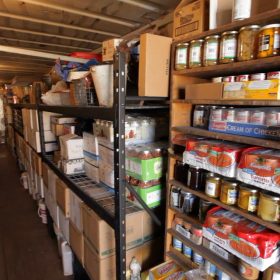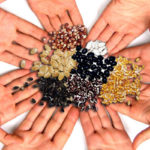Long-Term Food Storage Ideas
It is never a bad idea to have at least a small stockpile of food in the event of an emergency. Inclement weather events, power outages, and other disasters could make finding food outside of your home nearly impossible. Having something to fall back on is a smart and safe plan.
Why Should You Have Long-Term Food Storage?
Consider this very realistic scenario: What if you were caught in a long-term power outage due to a severe storm that caused flooding and major damage to roadways. In a situation like that you could be stuck in your home potentially for weeks.
Events such as this, and a long list of other possibilities, could happen to you. Having a plan to survive and thrive in any situation, including enough food and water to fall back on, will keep you and your family safe and healthy despite the drastic situation.
How Much Food Should You Store?
Every home should have a minimum of three days’ worth of food and water appropriate for their family size, but having at least two weeks’ worth is preferred. The rule of thumb for water is one gallon of water per person per day, and do not forget to count children and pets at up to a full gallon of water each as well. The amount of food will depend on your family, but there should be enough to provide enough calories and nutrition to keep you healthy. At the very minimum, each family member should be able to have at least one full meal per day.
What Kinds of Food Should You Store?
You will want to stock food that has a minimum of a 3-6 month shelf life, and keep that stock rotated so that nothing is spoiled should an emergency occur. Look for canned goods and other non-perishable foods that your family will eat. It will not do much good to only stock canned foods that no-one likes, because then it will be less likely that everyone will consume enough food and get the proper nutrition.
What Are Some Examples of Foods to Store?
Ready to eat canned goods that do not require cooking before consumption, granola bars, dried milk, peanut butter, nuts, and protein bars are all examples of good items to store. Crackers, bread, and similar products are good to keep as well – as long as you keep the stock rotated and keep in mind that they will not last as long as non-perishable items.
How Do You Store Food Items Long Term?
Have a shelf, closet, pantry, or cellar dedicated to your emergency food storage. Everything in your emergency food supply should be stored in airtight containers and you will want to have extra storage containers and/or zip lock bags to keep opened items in. Keep a list or clearly mark all boxes, cans, and bags with expiration dates and “opened on” dates and keep your stock rotated and free of expired items.
If you’re looking for longer than a few months of food storage keep in mind freeze dried and dehydrated foods. I personally dehydrate all kinds of fruits, vegetables, these will keep for over 15 years if done properly. and eggs, I wouldn’t go over two years but some websites say seven years so do your research on eggs. You can add all of your dry ingredients to a bag and vacuum seal it for cake mixes, casseroles and bread mixes. For soups and stews add all the vegetables and freeze dried meats then seal them up. You may also want to look up recipes for “meals in jars”. When you are ready to eat these you just add water to rehydrate them. Dehydrated and freeze dried are much lighter weight and take up less room compared to buying cans or doing home canning. Also, keep in mind you will need more water storage for rehydrating purposes.
Keeping a stockpile of food and water for your family to fall back on in times of need is a responsible part of emergency preparedness. Should a large storm or other disaster occur in your area, you are more likely to be able to survive comfortably for longer. These tips should help you build and maintain a long-term food storage.
Do you do any type of food storage let me know in the comment section.










Leave a reply